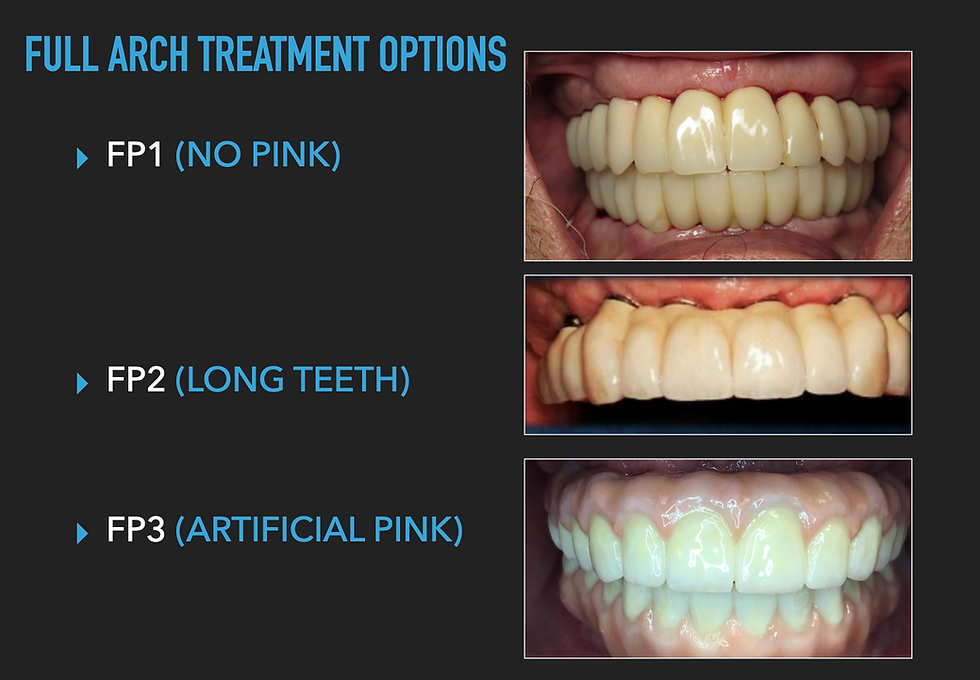Hi everyone, a bit delayed with my blogs of late due to a few projects but I am glad to be back to share with you all. I hope everyone is managing to stay safe and productive during this strange of times. Today's blog topic touches on a favorite subject of mine which is full arch implant treatment.
Often these kinds of cases present with patients that either have extensive decay or severe perio disease such that the teeth no longer can be maintained. I often get questions from doctors that ask how I plan these kinds of cases properly to ensure not only integration of the implants but ensure longterm AESTHETIC success of the case.
First we need to define what FP1 and FP3 prosthetics entail. Simply put, an FP1 prosthesis will replace the missing or edentulous patient back to crown and bridge style (no pink porcelain is used), FP2 entails having LONGER teeth, and FP3 replaces not only the teeth but also the HARD tissue component that is missing due to either an extended period of bone loss or when we need to gain space for adequate prosthesis thickness/hide the transition zone of patient in full smile.

In most cases that present to our practice, the patient will fall in the FP3 category and the reason is simple. These patients often have lost hard tissue to infections(perio disease), or being edentulous for a long period of time. In addition, we know that for long term success of an implant we need at least 1mm buccal and 1mm lingual around an implant of 3.5mm diameter as a MINIMUM. Ideally we would be aiming for 3.5mm diameter+2mm Buccal+2mm Lingual for a total 7.5mm ridge width. In order to achieve this we often need to perform alveoplasty procedures to gain this critical width needed.

Although it seems like we are causing harm, this bone reduction is actually critical to the success of our case from a functional and also esthetic perspective. There are many ways to achieve this bone reduction including burrs, piezo devices and saws. In my practice I use two common methods which are burr reduction and piezo.

Why do we perform bone reduction ? a few critical reasons:
Flat area for implant drills-minimizes slipping
Makes a narrow ridge into a wide ridge by flattening it
Gain space needed for restorative components
Flat surface is easier for hygiene for patient
To have enough space for the hybrid prosthesis without compromising the VDO
Hide the transition zone in full smile(gummy smile patients)
This bone reduction amount is all planned ahead of time by incorporating the patient's pictures , CBCT work up and prosthetic workup TOGETHER. there is no guess work of over or under bone reduction, this is a critical part of our planning steps.
Part 2 of our blog will touch base on FP1 surgery and prosthetics.
Comments